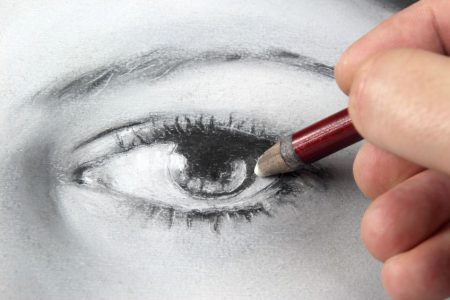
The Similarities Between the Processes of Drawing and Translation
by Chad Richardson
Dec 13, 2018
When you’re translating something, you may think that the process seems pretty simple. It’s like copying a picture from one piece of paper onto another. You can do it by dividing the original drawing and a blank piece of paper into smaller squares. It’s easier to copy the contents of one small square into another small square. Most people have the spatial skills necessary in order to do this.
But not everyone has what it takes to just draw what they see, free-hand, without any external aids. It takes true artistic skill in order to do this. And this is actually what is needed for a good translator as well.
Dividing the Drawing into Squares
Even a translator can translate a document by dividing it into squares. In this case, the squares stand for the individual words or phrases of the document. You can take a word in the original document and translate it, either from your memory or by using a dictionary. You can do this word by word. If you come across a phrase that you are familiar with and know that it means something other than the individual words, you can substitute the meaning of that phrase.
Nearly anyone can do this. But the result isn’t going to be exactly what you wanted, at least not when it comes to translation. You’ll end up with a mishmash of words and phrases in the wrong order. And even when it comes to sketching, this will just give you a facsimile of the original. It’s not going to capture the feel of the original drawing. Nor will it capture the gestalt of the subject.
Drawing the Subject Freehand
Consider the other process, in which the artist draws from a live figure or even from a photograph/picture but doesn’t use squares. In this case, the artist gets a chance to take in the entire feel of the subject. Even if you’re just drawing a subject’s face, you can still see their whole body. Plus, if you know them well, you will be familiar with their expressions and these might automatically get expressed in their portrait.
Similarly, when a translator who knows both, the source and destination language, translates a document, they’re going to read the whole document, understand its meaning and then settle down to translate it sentence by sentence. This will help them to express what the document is really trying to say.
Contact us for more great tips to translate your document in a way that captures its entire meaning.
Related Articles
Smart, Fun, and Fascinating Facts About the Use of Sign Language
Also known as ASL (or American Sign Language), this method of communicating with those who are either completely deaf or struggle with their hearing has been around for over two centuries. On the surface, watching those who silently speak, understand, and communicate with others using their hands may appear foreign to most, but it’s actually…
3 Traits for Healthier Meetings and Happier Employees
Have you ever sat in a meeting where you were suddenly jolted out of your daydream when someone asked for your opinion? Maybe you remember that meeting that seemed to drag on with no end in sight. Maybe you don’t remember the meeting at all. Did you ever leave a meeting wondering if you had…
Taking a Break to Manage Unsustainable Accelerated Growth
While growth is the ultimate reason people get into business, sometimes growing or expanding too quickly could lead to some unexpected complications. The challenge for any business owner is not to limit growth but to manage growth and capitalize on it if possible. The effects of unsustainable accelerated growth on your business could include: Having…
here
for you
We’d love to learn more about your translation and localization needs.